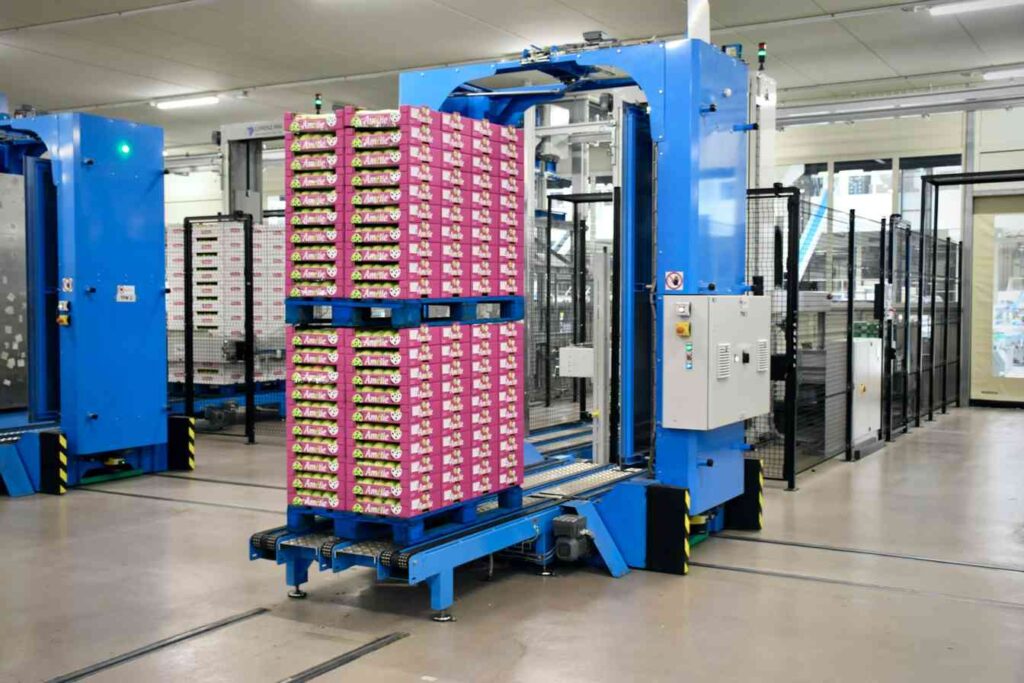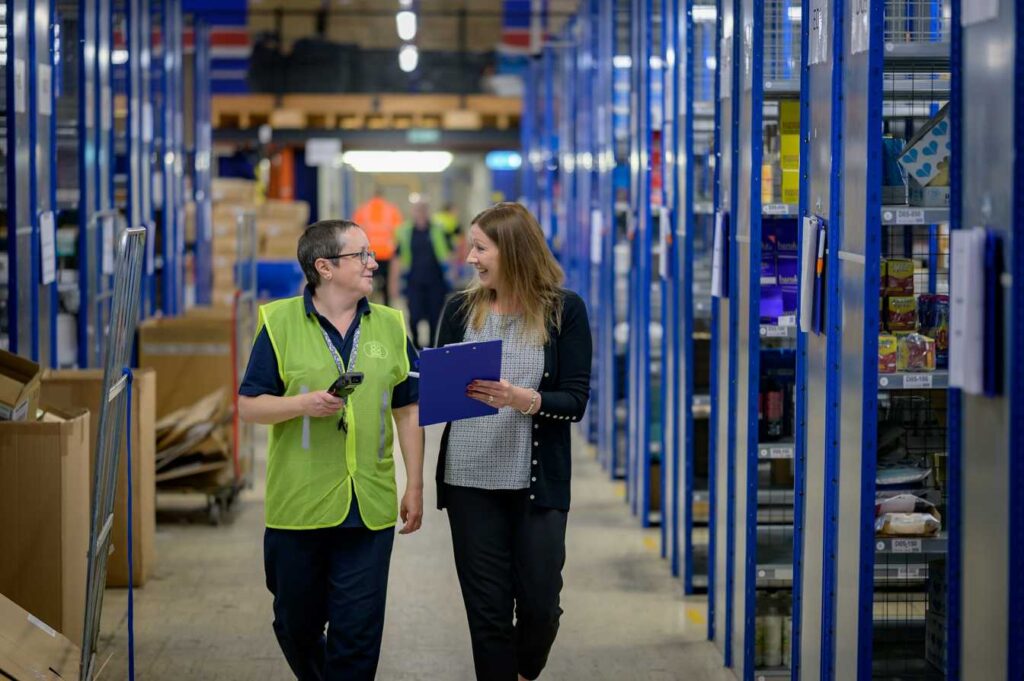Supply chains are to the world of commerce what veins and arteries are to our blood supply– it is what keeps everything moving and flowing. Without the smooth movement of goods from point A to point B, every business would come to a halt.
Luckily, just as there are medical interventions and innovations to keep human bodies working optimally, there are technologies that are helping to make supply chains more effective. We’re going to explore current supply chain technology trends to see how business and consumers can benefit.
Overview of Supply Chain Technology
It takes a lot of work to transform raw materials into finished products. And, if you’re in the business of supply chain management, you’re well aware that there is a lot to keep track of. Supply chain technology (SCT) refers to digital tools and systems that help to streamline supply chain management, moving goods and information from suppliers to manufacturers to consumers.
The history of supply chain management and technology has dramatically shifted over the past few decades. For example, before the 1960s, logistics was decentralized and many missing links within organizations led to delays and high costs.
During the 1970s, Total Cost Management (TCM) ushered in an era that looked at logistics holistically and leveraged computer networks to connect information. Fast forward to the 1990s, and you’ll recognize the birth of supply chain management models, particularly at the hands of the rising use of the internet and proliferation of computers.
Nowadays, speech AI, machine learning, and major advancements are completely reshaping how organizations manage their supply chains.

Key Technology Trends in Supply Chain Management
Let’s dive deeper into the current supply chain technology trends, namely:
Artificial Intelligence (AI) and Machine Learning
Like humans, computers have brains which are known as their central processing unit (CPU). Artificial intelligence is a growing field that includes machine learning and natural language processing (NLP), to name a few subfields, that are adding to computer systems’ intelligence. AI and machine learning are enabling computers to be more human-like in their capabilities, such as through speech AI, or the ability for computers to understand human language and transcribe it into text. In terms of supply chains, AI is used for:
- Predictive analytics for demand forecasting: Managing inventory is a necessity for those working within supply chain management. It’s a tricky task given ever changing consumer preferences. With AI, predictive analytics can be employed, which leverages historical data to forecast the future. This way, companies can maintain better control of future demand and inventory management.
- AI-driven decision-making tools: Additionally, AI can transform large volumes of raw data into usable insights by applying statistical models. As a result, stakeholders and managers are better equipped to make real-time decisions to better manage supply chains, reduce waste, and decrease downtime.
Internet of Things (IoT)
IoT refers to a network of connected devices that can communicate between each other and the cloud. These solutions power:
- Real-time tracking and monitoring: Knowing where raw materials and finished products are in their life cycle is critical for businesses and useful for customers. IoT devices allow for real-time tracking, ensuring that everyone involved knows what to expect.
- IoT-enabled inventory management: IoT-enabled inventory management automated data collection for precise inventory management, leading to better order accuracy, and ultimately, happier customers.
Blockchain Technology
Blockchain technology is a distributed database that stores information like a ledger, but since all information is withheld in “blocks” that are linked together, it is immutable and difficult to manipulate.
- Enhancing transparency and traceability: This type of recordkeeping technology makes sure that transactions, payments, and orders are unalterable and traceable.
- Authenticity of goods: In terms of supply chains, blockchain technology can be used to verify that goods are authentic, since the blockchain is a secure network of data that is hard to hack.
Robotics and Automation
While different AI technologies assist in automating processes, automation and robotics also happen at the physical level, empowering:
-
- Warehouse and fulfillment center automation: The use of technology to automatically manage fulfillment, thereby reducing human error and saving time. Check out Amazon’s use of robotics in fulfillment centers to streamline their processes worldwide.
- Robotics in manufacturing and assembly lines: Robots are used for order processing, as well as to manufacture goods along assembly lines, leading to more productivity and increased safety.
Speech AI in Supply Chain Management
We briefly alluded to speech AI, but now it’s time to see how this fascinating technology works in action in the world of logistics. But first, let’s define what it is.
Definition and Capabilities of Speech AI
Speech AI empowers a computer system to understand and communicate with humans via voice.
Speech recognition technology, such as aiOla, is being used in businesses to assist employees in getting more done in less time, more collaboratively, and safely. In essence, these systems can listen to a person talk, decipher the words, and either transcribe the language into text or fulfill actions as a response.
Applications in Supply Chain Operations
In terms of supply chain operations, here’s how speech AI like aiOla can help:
-
- Voice-activated control systems for warehouse management: If you’re overseeing a warehouse, the chances are high that you have checklists to work through that make sure equipment is functioning as it should be. Rather than having to document this information with pen and paper, risking mistakes and lost information, you can talk through the checklist as a tool like aiOla works down the list for you. aiOla captures all relevant speech data, including business-specific jargon, in any accent, language, and acoustic environment.
- Speech-to-text for streamlining documentation and reporting: With paper-based, manual processes, data is stored in silos and disparately. This makes it difficult for collaboration and access for those who need it. Speech AI like aiOla streamlines documentation and reporting, while also securely storing otherwise lost, but valuable data.
Benefits of Speech AI
Speech AI makes it possible to work faster, with less mistakes and greater accuracy. People across departments can collaborate more efficiently. For example, if maintenance needs to address an issue with a piece of faulty equipment, aiOla will streamline the notification to the necessary team in real-time, decreasing the risk of downtime.
Overall, speech AI also enhances accessibility and safety. Speech is the most natural form of communication, and for anyone who is unable to utilize technology to type or write, speech AI offers a solution.

Technological Considerations
With whatever speech chain technology trends that your business wishes to deploy to increase productivity, there are key considerations to take into account when getting started:
Integration and Compatibility
You’ll want to make sure that your chosen solutions integrate seamlessly with your existing systems, so that no data is lost and processes can continue forward.
Data Security and Privacy
All data must be securely stored and kept private. While it may seem scary to digitally store data, physical data storage doesn’t exist without risk, such as loss, theft, damage, and inaccessibility. With digitally protected data, there are mechanisms like access controls, two-factor authentication, constant updates, and encryption to keep it safe.
Cost and ROI
Last but not least, supply chain technology trends and solutions come along with a cost. Whether it’s fixed or subscription-based, it’s important to evaluate the financial impact and ROI that can be expected.
A Look Forward
There are many emerging trends that are taking center stage, such as augmented reality and digital twins. Digital twins are replicas of tangible goods, meaning that companies no longer have to ship goods, pay for costly photoshoots, and spend time editing to upload them for sale. Rather, technology creates a 3D replica on the spot, thereby eliminating a major portion of the supply chain and saving money.
From digital twins to speech AI, and all the other supply chain technology trends taking shape, businesses are saving money, improving productivity, and reducing mistakes.








